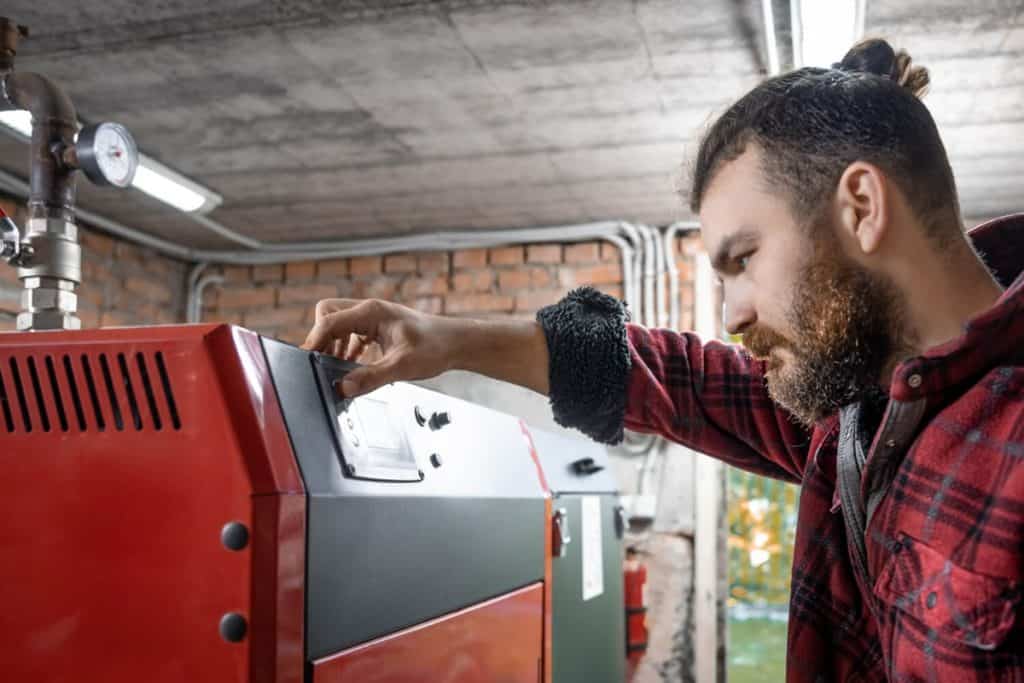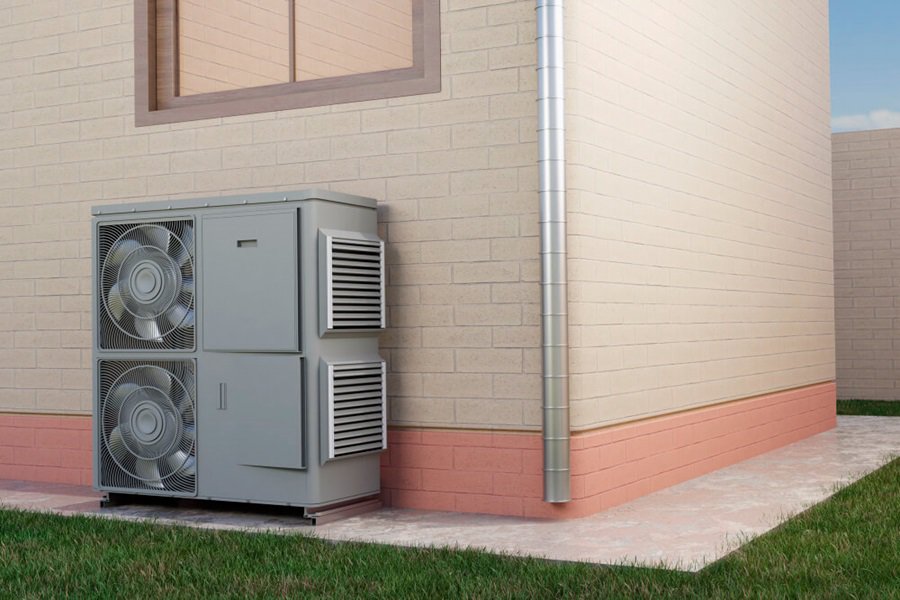
Did you know that you can combine ground source heat pumps with underfloor heating? Doing this is a great, if somewhat costly, way to be more eco-friendly in your home or other associated building structures. In this article, you will learn about how to add ground source heat pumps with underfloor heating, as well as the benefits it will bring rather than adding it to other heating systems such as a boiler. Make heating in your home more environmentally friendly by following the tips in this upcoming guide.
Before we begin, make sure to learn about what heat pumps are and how to get one.
- What Are Ground Source Heat Pumps?
- Air Source Heat Pumps
- How Ground Source Heat Pumps With Underfloor Heating Work
- How Do Heat Pumps Affect The Efficiency Of Your UFH?
- Great Ways To Futureproof Your Ground Source Heat Pumps With Underfloor Heating
- How To Design Underfloor heating With A Heat Pump In Mind
- Is A Ground Source Heat Pump Right For You?
- Optimise Your Home By Combining Ground Source Heat Pumps With Underfloor Heating
- FAQs
- Sources
What Are Ground Source Heat Pumps?

Ground source heat pumps (GSHPs) are a way to sustainably heat your home or other building structures whilst being eco-friendly, similar to other eco-friendly energy methods such as wind turbines and solar panels.
These systems, also known as ground-to-water heat pumps, harness the Earth’s natural warmth to power heating systems in your home, such as radiators and underfloor heating. A thermal transfer fluid (TTF), a mixture of water and antifreeze, circulates through a network of pipes buried underneath your outdoor space.
But how do GSHPs turn the Earth’s heat into warmth in your home? Heat from the ground is absorbed by the TTF, which flows through a series of pipes, either coiled in trenches or inserted into boreholes. This heat-loaded fluid then meets a heat exchanger within the heat pump, where it will gradually raise the temperature. Finally, this newly heated fluid transfers its warmth to water, which can then be used for underfloor heating.
What makes these more appealing with that you can combine ground source heat pumps with underfloor heating systems. Unlike traditional boiler and radiator setups, GSHPs excel at providing the lower water temperatures necessary for underfloor heating to work optimally. Moreover, GSHPs are incredibly energy-efficient, using only electricity to power the pumps. In fact, these systems can deliver up to three or four times as much thermal energy as the electrical energy they consume, making them a greener heating solution.
Air Source Heat Pumps
Since there are two kinds of heating pumps, the other variety are air source heat pumps (ASHPs), which tap into the renewable heat energy present in the outdoor air. These can also be paired with underfloor heating due to their requirement for low input temperatures. ASHPs offer many benefits, including reduced energy bills, minimal maintenance, and the capability to heat your home and other structures.
ASHPs are also part of the UK government’s Domestic Renewable Heat Incentive (RHI). This initiative offers quarterly cash payments to homeowners who install and utilise ASHPs as part of their heating methods, in order to promote greener energy.
How Ground Source Heat Pumps With Underfloor Heating Work
Both ground source heat pumps with underfloor heating systems are known for their exceptional energy efficiency. Radiators, in contrast, must generate substantial heat to warm a room due to their relatively small surface area. Underfloor heating systems, however, cover the entire floor plan of a room or with multi zone underfloor heating you can cover multiple areas, making them highly effective at lower heat levels.
But what factors influence their efficiency when working together? Switching from a boiler with underfloor heating to a heat pump requires specific design considerations. While a boiler system continuously generates new heat, a heat pump recycles existing warmth, which demands careful attention to reducing heat loss in homes with both the flow and return of the underfloor heating system. Larger piping and closer spacing, along with designs that evenly warm the return, are critical to maintaining consistent temperatures.
If you’re futureproofing your underfloor heating system for a potential heat pump installation, here are some design tips to consider:
- Opt for larger underfloor heating pipes (around 16mm in diameter).
- Space UFH pipes no more than 150mm apart, or closer if possible.
- Aim for a small temperature difference between the flow and return temperatures (around 5 degrees for heat pumps).
- Always design with a heat pump in mind, as it can be less efficient on a boiler-oriented design.
How Do Heat Pumps Affect The Efficiency Of Your UFH?
Transitioning from a conventional boiler system to underfloor heating powered by a heat pump may reveal certain challenges or problems. When underfloor heating is paired with a heat pump, whether it’s a ground source heat pump (GSHP) or an air source heat pump (ASHP), specific design considerations must be met for the system to be optimised correctly.
You should consider these tactics when implementing underfloor heating with ground or air source heating pumps:
- Flow and Return Temperature: When designing ground source heat pumps with underfloor heating, maintain a minimal temperature difference between the flow and return temperatures, ideally only 5 degrees. This is in contrast to boiler systems, which typically have a higher flow temperature and an 8 to 10-degree temperature difference. You can learn more here by checking what temperature should your home be.
- Design with a Heat Pump in Mind: Even if you currently have no plans to install a heat pump, consider a design with your UFH system in mind. UFH systems can last for many years, and this forward-thinking approach will save you the extra trouble in the future.
Great Ways To Futureproof Your Ground Source Heat Pumps With Underfloor Heating
For homeowners considering a potential heat pump installation in the future, here are some design details to incorporate to futureproof your UFH system:
- Larger UFH Pipes: Opt for larger UFH pipes, ideally around 16mm in diameter. This choice accommodates the lower temperature requirements of heat pumps.
- Close Pipe Spacing: Space the UFH pipes closely together, with no more than 150mm centres. If possible, bring them even closer to enhance heat distribution.
- Temperature Matching: Ensure the designer sets the UFH system to have a minimal temperature difference between the flow and return temperatures, ideally just 5 degrees. This design aligns with heat pump requirements for optimal efficiency.
- Heat Pump-Oriented Design: Always consider designing your UFH system with a heat pump in mind, even if it’s not an immediate plan. Such a design will not only work well with a heat pump but can also be less efficient if designed primarily for a traditional boiler system.
How To Design Underfloor heating With A Heat Pump In Mind
When designing and installing an underfloor heating system compatible with a heat pump, several factors come into play to ensure maximum efficiency:
1. Installation on Hard Ground Floors: If you’re working with a hard ground floor, consider clipping the pipes to the floor insulation and then embedding them in the floor screed. This process is common for new build ground floor rooms as well will align better with both boiler and heat pump UFH systems. You should be especially aware of this when learning about underfloor heating on concrete floors.
2. Installation on Suspended Floors: For suspended floors, pipes can be installed under the floorboards by notching the joists, or you can use overlay systems and insulation boards, typically around 20mm thick. Overlay boards, made of materials like polystyrene, wood fibre, or composites, feature grooves to secure the pipes. The final floor finish is installed over these boards.
Keep in mind that if you plan to install underfloor heating with carpet, you may require additional deck boards to ensure level floors and even stairs. Overlay boards have the advantage of quicker heat-up and cooldown times compared to a screed solution.
Is A Ground Source Heat Pump Right For You?
Considering a ground source heat pump for your home requires weighing the initial investment against long-term benefits. GSHP systems can carry upfront costs ranging from £17,000 to £45,000, with an accepted budget figure of around £1,200 per kilowatt (kW) capacity. While this may seem substantial, the return on investment unfolds over several years. Reduced energy bills and potential government subsidies should help to cover the cost.
To make integrating a GSHP into your home or other building structures easier, consider implementing it during the design phase, which is why these systems are better in new build homes. Ensuring that the home or other building structure is insulated correctly will enable the pumps to perform better.
Staying within budget
While underfloor heating for ground source heat pumps offers exceptional energy efficiency, it’s important to acknowledge that they are more expensive than traditional radiator systems. Some may prefer to merge the two to balance the cost; they install underfloor heating on the lower floor where they spend the majority of their time, enjoying warmer temperatures around 21°C. Upstairs in bedrooms, where slightly lower design temperatures of 18°C will be regulated, wall heaters or multi zone underfloor heating can be added to align with your budget.
Optimise Your Home By Combining Ground Source Heat Pumps With Underfloor Heating
In conclusion, to combine ground source heat pumps with underfloor heating provides an eco-friendly and efficient heating solution for homes and other structures in the UK. By adding natural energy from the Earth alongside underfloor heating will maximises energy efficiency by distributing heat evenly throughout the building. However, be aware of when source pumps should be installed around the building, as this can be an extremely costly exercise, which is why we recommend installing them with off-grid homes and new builds.
Now, there is only one question left to ask, which is better: heat pumps or gas boilers? Find out now.
FAQs
Can you run ground source heat pumps with underfloor heating?
Yes, underfloor heating can be effectively powered by a ground source heat pump (GSHP).
Can an air source heat pump be used with underfloor heating?
Yes, air source heat pumps (ASHPs) can be used with underfloor heating systems.
What are the downsides of a ground source heat pump?
Downsides of GSHPs include high installation costs, land or drilling requirements, and potential maintenance expenses.
Do ground source heat pumps use a lot of electricity?
GSHPs are efficient, but they still require electricity to operate. However, they can provide substantial energy savings compared to conventional heating systems.
Sources
BBC News. (2023) Heat pumps: How do they work and how do I get one? BBC News. [online] Available at: https://www.bbc.co.uk/news/science-environment-57159056 [accessed 09/11/23]
PBC Today., (2023) Heat pumps vs gas boilers: Why the tipping point has been reached. PBC Today. [online] Available at: https://www.pbctoday.co.uk/news/energy-news/heat-pumps-vs-gas-boilers-tipping-point/134405/ [accessed 09/11/23]
GOV.UK. (n.d.) Domestic Renewable Heat Incentive (RHI). [online] Available at: https://www.gov.uk/domestic-renewable-heat-incentive [accessed 09/11/23]
Vishnubhotla, V., (2023) How Much Does a GSHP Cost? Green Match. [online] Available at: https://www.greenmatch.co.uk/ground-source-heat-pump/cost [accessed 09/11/23]
